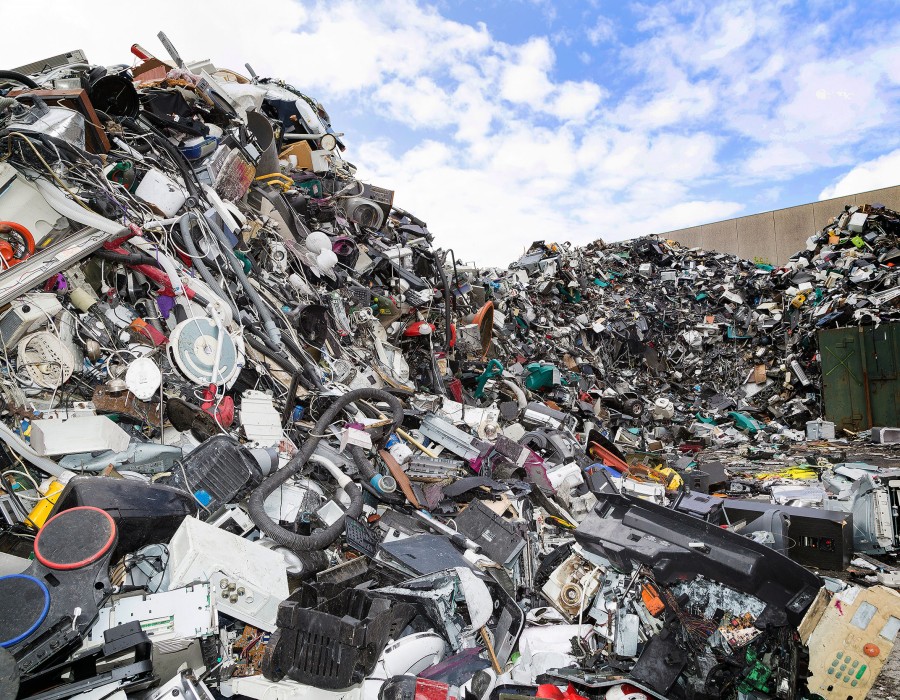In today's digital age, the rapid pace of technological advancement has led to a significant increase in electronic waste (e-waste). From outdated smartphones to obsolete computers, the disposal of electronic devices poses a growing environmental challenge. However, the good news is that electronics are recyclable, and understanding the importance and process of e-waste recycling is crucial for minimizing environmental impact and promoting sustainability.
The Importance of E-Waste Recycling
1. Reducing Environmental Impact
E-waste contains hazardous materials such as lead, mercury, and cadmium, which can leach into the soil and water if not disposed of properly. Recycling electronics helps prevent these toxic substances from contaminating the environment, thus reducing the risk of soil and water pollution.
2. Conserving Natural Resources
Many electronic devices contain valuable materials like gold, silver, and copper. By recycling these devices, we can recover these precious metals and reduce the need for mining, which conserves natural resources and reduces the environmental footprint associated with mining activities.
3. Reducing Landfill Waste
Electronic devices take up significant space in landfills, and their non-biodegradable components can persist for hundreds of years. Recycling e-waste helps divert these materials from landfills, reducing the volume of waste and the pressure on landfill sites.
4. Promoting Sustainable Manufacturing
Recycling e-waste provides manufacturers with a source of raw materials, which can be used to produce new electronic devices. This reduces the need for virgin materials and promotes a circular economy, where products are designed for reuse, refurbishment, and recycling.
The Process of E-Waste Recycling
1. Collection and Transportation
The first step in e-waste recycling is the collection of discarded electronic devices. This can be done through designated drop-off points, collection drives, or pick-up services provided by recycling companies. Once collected, the e-waste is transported to recycling facilities.
2. Sorting and Dismantling
At the recycling facility, the e-waste is sorted based on the type of device and material composition. Devices are then manually dismantled to separate components such as circuit boards, batteries, and plastic casings. This step is crucial for ensuring that different materials are processed appropriately.
3. Shredding and Separation
The dismantled components are then fed into shredders, which break them down into smaller pieces. Advanced separation technologies, such as magnetic, eddy current, and optical sorting, are used to segregate materials like metals, plastics, and glass. This ensures that each material can be processed and recycled separately.
4. Material Recovery
The separated materials undergo further processing to recover valuable metals and other recyclable components. For example, metals are smelted and refined to produce pure metal ingots, while plastics are cleaned and pelletized for reuse in manufacturing new products.
5. Responsible Disposal
Non-recyclable and hazardous materials are disposed of responsibly, following strict environmental regulations. This ensures that any remaining waste is managed in an environmentally safe manner, minimizing potential harm to the ecosystem.
How to Recycle Your Electronics
1. Find a Certified E-Waste Recycler
Look for recycling programs and facilities that are certified by recognized organizations such as e-Stewards or R2 (Responsible Recycling). These certifications ensure that the recycler adheres to high environmental and ethical standards.
2. Utilize Manufacturer and Retailer Programs
Many electronics manufacturers and retailers offer take-back programs or recycling services for their products. Check with the brand or store where you purchased your device to see if they provide recycling options.
3. Participate in Community Collection Events
Local governments and environmental organizations often host e-waste collection events. These events provide a convenient way to dispose of your electronics responsibly and ensure they are recycled properly.
4. Donate or Resell Working Devices
If your electronic device is still functional, consider donating it to schools, non-profits, or individuals in need. Alternatively, you can sell it through online platforms or trade-in programs, giving it a second life and reducing e-waste.
Recycling electronics is not only possible but essential for protecting the environment and conserving resources. By understanding the importance and process of e-waste recycling, we can make informed decisions about the disposal of our electronic devices and contribute to a more sustainable future. So next time you're ready to part with an old gadget, remember: recycling is the key to a cleaner, greener planet. So when someone asks: "are electronics recyclable ?" The answer is yes!





Comments